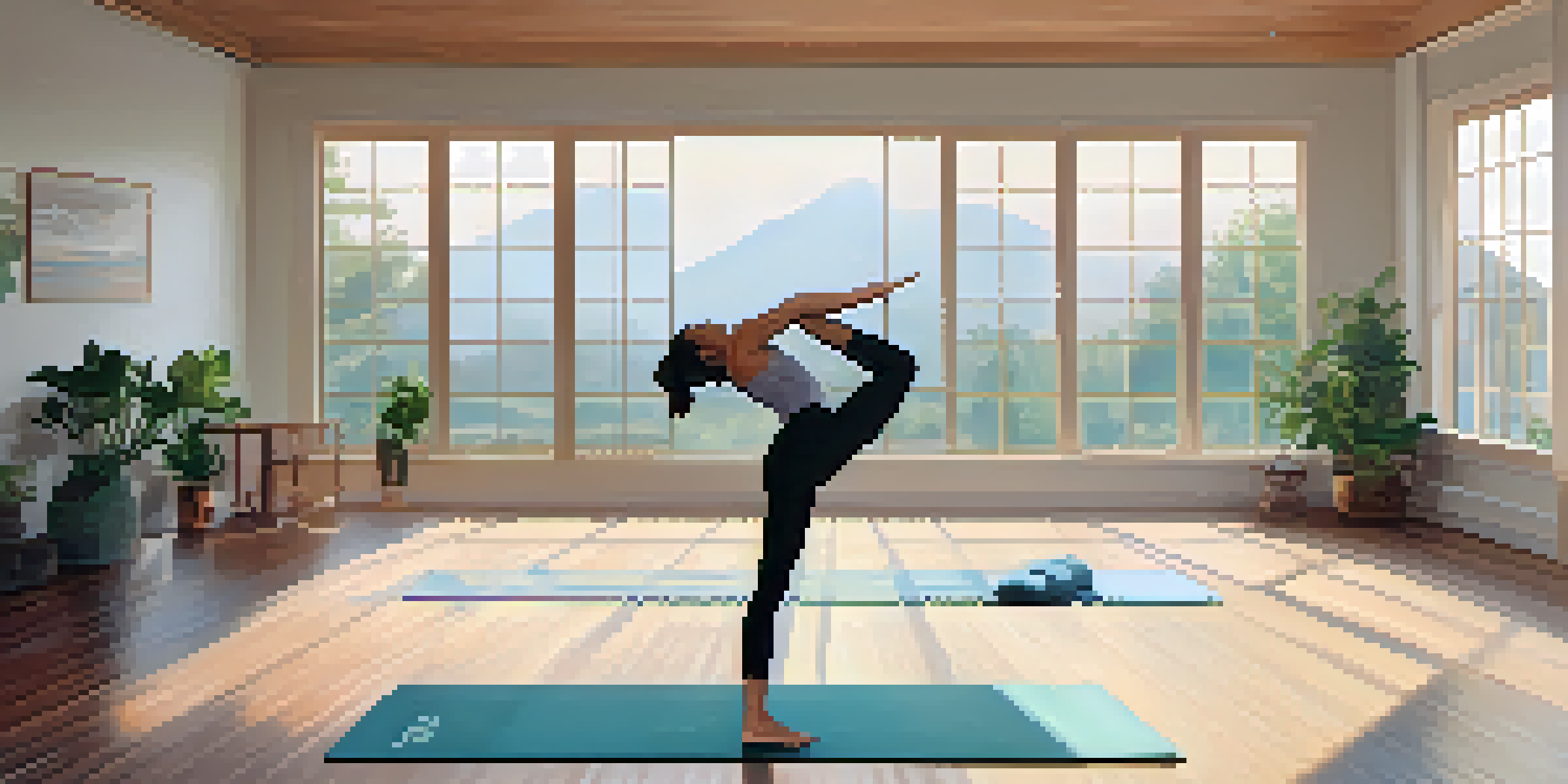Beginner-Friendly Yoga Techniques for Better Posture

Understanding the Importance of Good Posture
Good posture is essential for overall health and well-being. It affects how we breathe, our energy levels, and even our mood. Poor posture can lead to discomfort and chronic pain, making it crucial to address.
Posture is the window to your soul.
When we sit or stand correctly, we allow our body to function optimally. Think of it like a well-tuned instrument; each part needs to be aligned for the best sound. Similarly, an aligned body supports better organ function and circulation.
Yoga offers a gentle yet effective way to improve posture by strengthening the muscles that support our spine. By incorporating beginner-friendly techniques, we can create lasting changes that benefit our daily lives.
Starting with Mountain Pose (Tadasana)
Mountain Pose, or Tadasana, is a foundational yoga position that helps you understand alignment. Simply standing tall with your feet together and arms at your sides, you focus on grounding yourself and lengthening your spine.

As you stand, engage your thighs and lift your chest, imagining a string pulling you upwards from the crown of your head. This pose is not just about standing; it's about finding stability and balance within your body.
Good Posture Enhances Well-Being
Maintaining good posture improves breathing, energy levels, and mood while preventing discomfort and chronic pain.
Practicing Mountain Pose regularly can help reinforce good posture habits. It reminds you to be mindful of your alignment throughout the day, whether you’re sitting at a desk or walking.
Embracing Cat-Cow Stretch for Spinal Flexibility
The Cat-Cow Stretch is a dynamic yoga sequence that enhances spinal flexibility and posture. Alternating between arching and rounding your back, this stretch encourages mobility in your spine, which is vital for maintaining good posture.
The way you carry yourself can affect how you feel about yourself.
To perform this stretch, start on your hands and knees. Inhale as you arch your back (Cow), and exhale as you round it (Cat). This rhythmic movement not only feels good but also helps release tension in your back.
Incorporating the Cat-Cow Stretch into your routine can counteract the effects of prolonged sitting. It serves as a gentle reminder to check in with your body and adjust your posture as needed.
Practicing Child’s Pose for Relaxation
Child's Pose, or Balasana, is a restorative position that encourages relaxation and stretches the back. This pose allows you to release tension in your spine while promoting a sense of calm, making it perfect for a busy day.
To get into Child's Pose, kneel on the floor and sit back on your heels. Reach your arms forward or let them rest by your sides as you fold your torso over your thighs. This position helps you reconnect with your breath.
Yoga Techniques for Better Posture
Incorporating yoga poses like Mountain Pose and Cat-Cow Stretch can significantly strengthen your spine and promote better alignment.
Regular practice of Child's Pose can help alleviate stress and improve your posture. It teaches you to listen to your body and take a moment to reset, which is essential for maintaining alignment throughout the day.
Strengthening Core with Plank Pose
Plank Pose is a powerful way to strengthen your core, which is crucial for good posture. A strong core supports your spine and helps prevent slouching, making it easier to maintain an upright position.
To perform a Plank, start in a push-up position with your body in a straight line from head to heels. Engage your abdominal muscles and hold the position while breathing deeply. It may seem simple, but it’s incredibly effective.
Incorporating Plank Pose into your routine can build endurance and stability. As your core strengthens, you’ll notice improved posture both on and off the mat.
Incorporating Downward-Facing Dog for Alignment
Downward-Facing Dog, or Adho Mukha Svanasana, is a classic yoga pose that helps elongate the spine and align the body. This pose not only stretches your muscles but also encourages proper posture by engaging your back and shoulders.
To get into Downward Dog, start on your hands and knees, then lift your hips up and back, forming an inverted V shape. Focus on pressing your heels towards the ground and lengthening your spine.
Consistency is Key for Posture
Establishing a daily routine that includes yoga poses can reinforce good posture habits and lead to long-term improvements in physical and mental well-being.
Practicing Downward-Facing Dog can create a sense of space in your body, helping to counteract the effects of slouching. It’s a great way to reset your posture during the day and reconnect with your breath.
Finding Balance with Warrior II Pose
Warrior II Pose, or Virabhadrasana II, is not just a powerful stance; it’s also excellent for improving posture. This pose strengthens your legs, opens your hips, and encourages upright alignment in your spine.
To practice Warrior II, stand with your feet wide apart and turn one foot out. Bend the knee of the turned foot while extending your arms parallel to the floor. This position embodies strength and stability, promoting confidence in your posture.

Incorporating Warrior II into your yoga practice can empower you both physically and mentally. As you grow stronger, you’ll find it easier to sit and stand tall in your everyday life.
Creating a Daily Routine for Better Posture
To truly benefit from these yoga techniques, consistency is key. Creating a daily routine that incorporates these poses can help reinforce good posture habits and promote overall well-being.
Start by setting aside just a few minutes each day to practice these beginner-friendly techniques. Whether you do them in the morning to wake up your body or in the evening to unwind, find what works best for you.
Over time, you’ll notice improvements not only in your posture but also in how you feel physically and mentally. Embrace the journey, and remember that small, consistent efforts lead to significant changes.